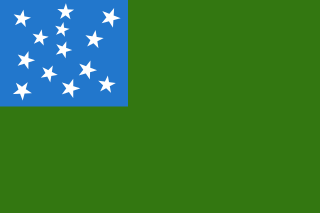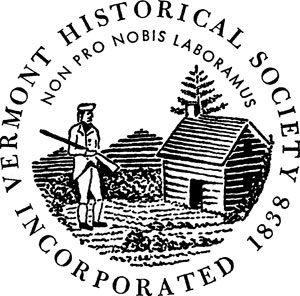Anarcho-syndicalism is a political philosophy and anarchist school of thought that views revolutionary industrial unionism or syndicalism as a method for workers in capitalist society to gain control of an economy and thus control influence in broader society. The end goal of syndicalism is to abolish the wage system, regarding it as wage slavery. Anarcho-syndicalist theory therefore generally focuses on the labour movement.

Murray Bookchin was an American communalist, political philosopher, trade-union organizer, and educator. A pioneer in the environmental movement, Bookchin formulated and developed the theory of social ecology and urban planning, within anarchist, libertarian socialist, and ecological thought. He was the author of two dozen books covering topics in politics, philosophy, history, urban affairs, and social ecology. Among the most important were Our Synthetic Environment (1962), Post-Scarcity Anarchism (1971), The Ecology of Freedom (1982) and Urbanization Without Cities (1987). In the late 1990s, he became disenchanted with what he saw as an increasingly apolitical "lifestylism" of the contemporary anarchist movement, stopped referring to himself as an anarchist, and founded his own libertarian socialist ideology called communalism, which seeks to reconcile Marxist and anarchist thought.

A black bloc is a tactic used by protesters who wear black clothing, ski masks, scarves, sunglasses, motorcycle helmets with padding, or other face-concealing and face-protecting items. The clothing is used to conceal wearers' identities and hinder criminal prosecution by making it difficult to distinguish between participants. It is also used to protect their faces and eyes from pepper spray, which is used by police during protests or civil unrest. The tactic allows the group to appear as one large unified mass. Black bloc participants are often associated with anarchism, anarcho-communism, communism, libertarian socialism or the anti-globalization movement.
An urban guerrilla is someone who fights a government using unconventional warfare or domestic terrorism in an urban environment.
Anarchists have employed certain symbols for their cause, including most prominently the circle-A and the black flag.

The Green Mountain Peace and Justice Party of Vermont is a democratic socialist political party founded in 1970 by former Congressman William H. Meyer, Peter Diamondstone, Dennis Morrisseau and others.
Communalism is a political philosophy and economic system that integrates communal ownership and confederations of highly decentralized independent communities. Murray Bookchin, a prominent libertarian socialist, defined the communalism he developed as "a theory of government or a system of government in which independent communes participate in a federation" as well as "the principles and practice of communal ownership". The term government does not imply acceptance of a state or top-down hierarchy.

The Zabalaza Anarchist Communist Front, formerly known as the Zabalaza Anarchist Communist Federation (ZabFed), is a platformist–especifista anarchist political organisation in South Africa, based primarily in Johannesburg. The word zabalaza means "struggle" in isiZulu and isiXhosa. Initially, as ZabFed, it was a federation of pre-existing collectives, mainly in Soweto and Johannesburg. It is now a unitary organisation based on individual applications for membership, describing itself as a "federation of individuals". Historically the majority of members have been people of colour. Initially the ZACF had sections in both South Africa and Swaziland. The two sections were split in 2007, but the Swazi group faltered in 2008. Currently the ZACF also recruits in Zimbabwe. Members have historically faced repression in both Swaziland and South Africa.

Anarchism in Africa refers both to purported anarchic political organisation of some traditional African societies and to modern anarchist movements in Africa.
The Alternative Media Project was a non-profit organization that promoted anarchist media.
Anarchism in the United States began in the mid-19th century and started to grow in influence as it entered the American labor movements, growing an anarcho-communist current as well as gaining notoriety for violent propaganda of the deed and campaigning for diverse social reforms in the early 20th century. By around the start of the 20th century, the heyday of individualist anarchism had passed and anarcho-communism and other social anarchist currents emerged as the dominant anarchist tendency.

The Second Vermont Republic is a secessionist group within the U.S. state of Vermont which seeks to restore the formerly independent status of the Vermont Republic (1777–91). It describes itself as "a nonviolent citizens' network and think tank opposed to the tyranny of Corporate America and the U.S. government, and committed to the peaceful return of Vermont to its status as an independent republic and more broadly the dissolution of the Union." The organization was founded in 2003 by Thomas Naylor (1936–2012), a former Duke University economics professor and co-author of the 1997 book Downsizing the U.S.A. A 2010 TIME article featured the Second Vermont Republic as one of the "Top 10 Aspiring Nations".
Anarchist law is a body of norms regarding behavior and decision-making that might be operative in an anarchist community. The term is used in a series of ongoing debates within the various branches of anarchist theory regarding if and how norms of individual and/or collective behavior, decision-making and actions should be created and enforced. Although many anarchists would consider "anarchist law" simply synonymous with natural law, others contend law in anarchy would have additional, unique elements. Over the course of the last two hundred years as anarchism has grown and evolved to include diverse strains, there have been different conceptions of "anarchist law" produced and discussed, or used in practice by anarchist networks such as Peoples' Global Action or Indymedia.
Post-colonial anarchism is a term coined by Roger White in response to his experience as an Anarchist Person of Color in the anarchist movement in North America.

The Vermont Historical Society (VHS) was founded in 1838 to preserve and record the cultural history of the US state of Vermont. Headquartered in the old Spaulding School Building in Barre, the Vermont History Center is home to the Vermont Historical Society's administrative offices, the Leahy Library and a small book shop. In Montpelier the Society operates the Vermont History Museum in the Pavilion building, just east of the Vermont State House.
Contemporary anarchism within the history of anarchism is the period of the anarchist movement continuing from the end of World War II and into the present. Since the last third of the 20th century, anarchists have been involved in anti-globalisation, peace, squatter and student protest movements. Anarchists have participated in violent revolutions such as in the Free Territory and Revolutionary Catalonia and anarchist political organizations such as the International Workers' Association and the Industrial Workers of the World exist since the 20th century. Within contemporary anarchism, the anti-capitalism of classical anarchism has remained prominent.
The political philosophy of anarchism has had a small presence in New Zealand politics.

Direct action originated as a political activist term for economic and political acts in which the actors use their power to directly reach certain goals of interest; in contrast to those actions that appeal to others ; by, for example, revealing an existing problem, using physical violence, highlighting an alternative, or demonstrating a possible solution.
Free Vermont was a network of communes and collectives throughout the state of Vermont. It existed from the late 1960s through the mid-1970s. It encompassed over a dozen communes and hundreds of people. They put out their own newspaper called "Free Vermont!" and they had their own flag. They laid the groundwork for food co-ops, health clinics, free schools, organic farms, and alternative institutions throughout Vermont. Some of the Free Vermont initiators were members of the radical film group "Newsreel".

Platformism is a form of anarchist organization that seeks unity from its participants, having as a defining characteristic the idea that each platformist organization should include only people that are fully in agreement with core group ideas, rejecting people who disagree. It stresses the need for tightly organized anarchist organizations that are able to influence working class and peasant movements.









